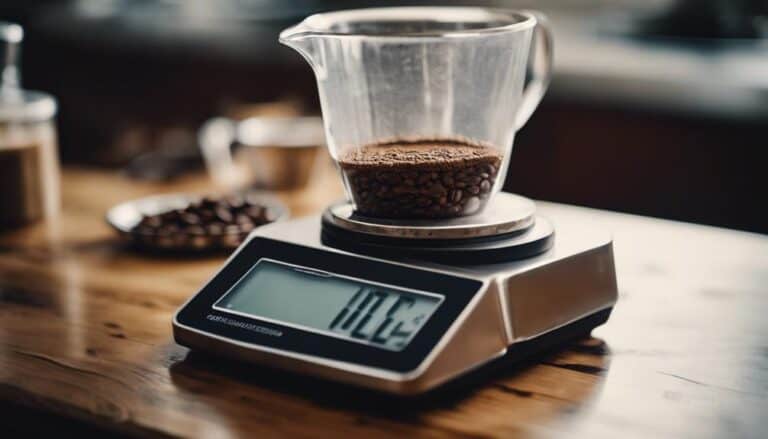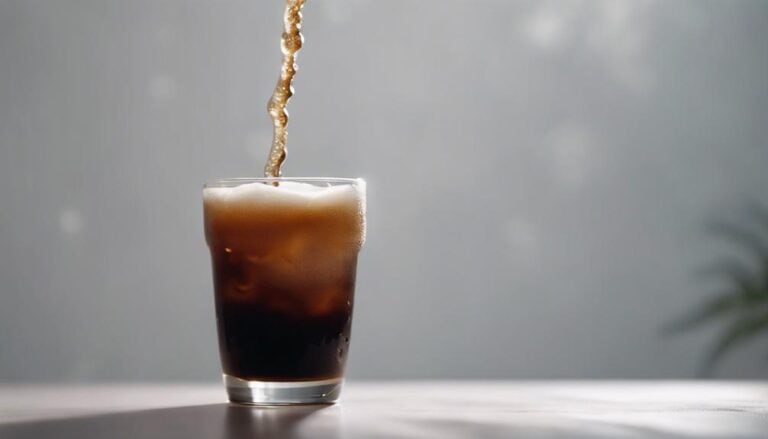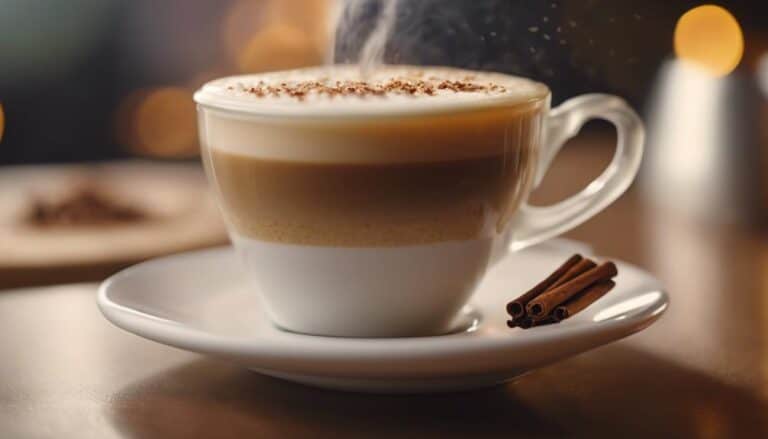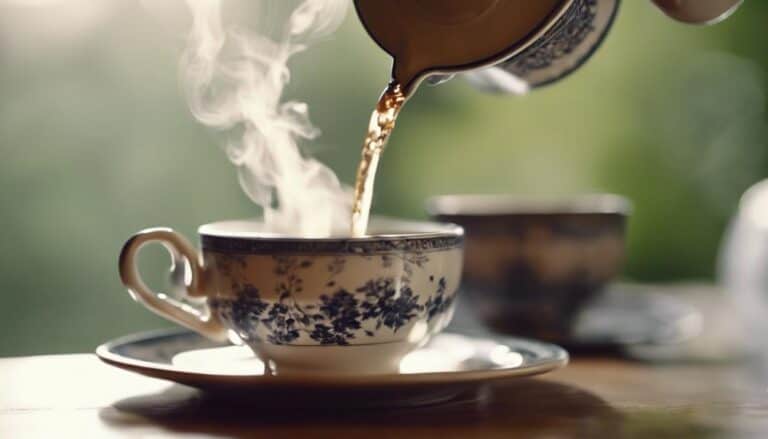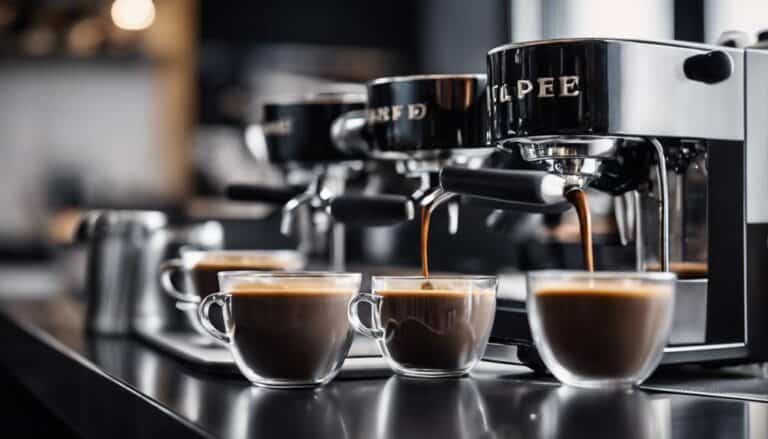Lattes Vs Cappuccinos: the Ultimate Comparison

As I sip my morning latte, I can't help but ponder the age-old debate between lattes and cappuccinos. The contrasting compositions of these espresso-based beverages offer a glimpse into the nuanced world of coffee preferences and palates. Each sip reveals a story of flavor, texture, and craftsmanship, prompting a thoughtful consideration of which brew truly reigns supreme. So, which will emerge victorious in this ultimate comparison of lattes versus cappuccinos?
Origins and History
Cappuccinos and lattes, beloved espresso beverages with rich histories, trace their origins back to Italy in the 16th century. Rooted in Italian coffee culture, these espresso-based drinks have been a staple of traditional caffe latte preparations. The evolution from basic caffe lattes to the intricate cappuccinos we enjoy today speaks volumes about the craftsmanship and passion embedded in Italian coffee traditions.
Italian coffee culture isn't just about a morning pick-me-up; it's a way of life. The meticulous process of creating a perfect cappuccino or latte involves not just mixing espresso and milk but also a deep understanding of balance and flavor profiles. The Italians have mastered the art of espresso, and that expertise shines through in every sip of a well-crafted cappuccino or latte.
The historical significance of cappuccinos and lattes goes beyond mere drinks; they're symbols of freedom, creativity, and self-expression. Embracing these espresso-based delights means embracing a piece of Italian culture and history in every frothy cup.
Ingredient Comparison
Comparing the ingredients of cappuccinos and lattes reveals distinct differences regarding the ratios of espresso, steamed milk, and foam, impacting the overall flavor and texture of each espresso-based drink.
Cappuccinos boast equal portions of espresso, steamed milk, and foam, creating a harmonious blend of strong coffee notes with a velvety mouthfeel. The thick and airy foam in cappuccinos adds a luxurious layering effect, enhancing the drinking experience.
On the other hand, lattes feature a higher ratio of steamed milk to espresso, resulting in a creamier texture and a milder coffee taste. The lighter foam topping of lattes contributes to a smoother sip without overpowering the espresso flavor.
While lattes may include sweeteners for those craving a sugary kick, cappuccinos stand out for their balanced flavors, allowing the richness of the espresso to shine through without added sweetness. Additionally, cappuccinos tend to be a lighter option regarding calories due to the lower milk content, making them a suitable choice for those watching their calorie intake.
Espresso and Milk Ratios
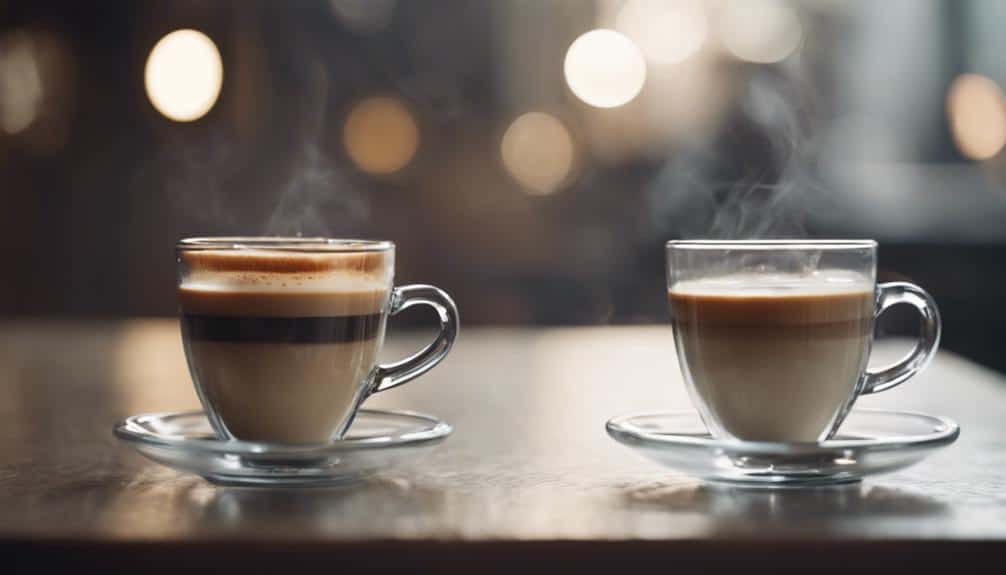
When it comes to espresso and milk ratios, the thickness of the foam and the concentration of espresso play a vital role in distinguishing cappuccinos from lattes.
A cappuccino's 1:1 ratio of espresso to milk results in a bolder espresso flavor, complemented by a thicker foam layer that enhances the overall drinking experience.
On the other hand, lattes with a 1:2 ratio offer a creamier texture and a milder coffee taste due to a higher proportion of steamed milk.
Foam Thickness
With a meticulous balance of espresso and milk, the foam thickness in specialty coffee drinks greatly influences the overall sensory experience. When it comes to foam thickness, cappuccinos take the lead with their luxurious, thick layer that perfectly marries the rich espresso flavor with a velvety texture. On the other hand, lattes offer a lighter foam, resulting in a creamier mouthfeel and a milder taste profile. The difference in foam thickness between these two beverages is not just about visuals; it markedly impacts the overall taste experience. Here's a comparison table to highlight the distinctions:
| Aspect | Cappuccino | Latte |
|---|---|---|
| Foam Thickness | Thicker foam layer contributing to a strong espresso flavor | Lighter foam resulting in a creamier, milder taste |
Espresso Concentration
Moving from the discussion on foam thickness, the espresso concentration in cappuccinos and lattes plays a defining role in shaping the distinct flavor profiles of these popular coffee beverages.
Cappuccinos boast a higher espresso concentration, with a balanced blend of espresso, steamed milk, and foam. This 1:1 ratio results in a robust coffee flavor that stands out.
On the other hand, lattes lean towards a creamier texture by incorporating more steamed milk and less foam, leading to a milder espresso concentration. The espresso to milk ratio in lattes usually sits at around 1:2, offering a smoother and less intense coffee taste.
These differences in espresso concentration between cappuccinos and lattes significantly impact the overall flavor and texture of the drinks, satisfying various coffee preferences.
Caffeine Levels
Examining the caffeine levels in cappuccinos and lattes reveals a significant difference, with lattes typically containing nearly double the amount found in cappuccinos. This distinction arises from the varying ratios of espresso to steamed milk in each drink. A 16-ounce cappuccino usually contains around 75 mg of caffeine, as it consists of equal parts espresso, steamed milk, and foam. Conversely, a 16-ounce latte packs approximately 155 mg of caffeine due to its higher proportion of espresso to steamed milk.
The contrasting caffeine content in these beverages can be attributed to the espresso concentration, underscoring the importance of comprehending the components of each drink. While cappuccinos offer a milder caffeine boost, lattes provide a more substantial kick for those seeking a stronger dose. It's crucial to take into account these differences when choosing between the two, based on your desired caffeine intake and taste preferences.
Taste and Texture Variations

In my opinion, the distinct taste and texture variations between cappuccinos and lattes cater to diverse coffee preferences, offering contrasting experiences for coffee enthusiasts.
Cappuccinos boast a robust espresso taste harmoniously blended with velvety steamed milk and a thick layer of foamed milk, creating a bold and layered flavor profile. The foam in cappuccinos not only adds a visual appeal with its distinct layers but also contributes to a fluffy and velvety mouthfeel, enhancing the overall drinking experience.
On the other hand, lattes are renowned for their creamy texture and milder espresso taste, where the higher proportion of steamed milk to espresso results in a smoother and more subtle coffee flavor. This creaminess in lattes appeals to those seeking a gentler coffee taste without compromising on the richness of a well-crafted espresso.
Ultimately, the preference between cappuccinos and lattes often comes down to individual taste, whether for a stronger espresso kick or a creamier, more subdued coffee indulgence.
Nutritional Variances
When considering the nutritional variances between cappuccinos and lattes, it becomes evident that the calorie content of these coffee beverages can notably differ based on various factors such as milk type and additional flavorings. Opting for non-fat milk or alternative milk options can greatly impact the calorie count of your drink, making it a healthier choice. Cappuccinos generally contain fewer calories compared to lattes due to their lower milk content and thicker foam layer. However, the addition of syrups or sweeteners can increase the calorie content in both beverages.
To illustrate the calorie variances further, let's break it down in a simple table:
| Coffee Type | Calorie Content (12 oz) | Notes |
|---|---|---|
| Cappuccino | 130 calories | Typically lower in calories |
| Latte | 210 calories | Higher calorie content |
| With non-fat milk or alternative | Fewer calories | Healthier option |
Choosing non-fat milk or sugar-free syrups in your cappuccinos or lattes can help in managing your calorie intake effectively.
Popular Variations and Customization

Among the plethora of latte variations available, each offering a distinct flavor profile, the versatility of this coffee beverage allows for a personalized and delightful experience. From classic mocha to seasonal pumpkin spice and exotic chai, there's a latte flavor to suit every taste preference.
The beauty of lattes lies in their customizability – whether you prefer a hint of vanilla, a touch of hazelnut, or the sweetness of caramel, syrups can transform your latte into a unique creation. For those looking for a caffeine alternative, chai lattes made with black tea and aromatic spices offer a soothing and flavorful option.
Additionally, alternative lattes featuring matcha, mate, or tea provide a rejuvenating twist on the traditional latte, catering to diverse palates and preferences. The ability to experiment with different flavors and ingredients makes lattes a popular choice for those seeking a personalized and adventurous coffee experience.
Conclusion
To sum up, lattes and cappuccinos each offer a unique and delightful coffee experience. Whether you prefer the creamy and smooth texture of a latte or the bold espresso kick of a cappuccino, both beverages cater to different taste preferences.
The artistry and versatility of Italian coffee culture shine through in these iconic drinks, allowing coffee lovers to enjoy their favorite flavors with every sip. Choose your favorite and savor the rich flavors of these beloved espresso-based beverages.
